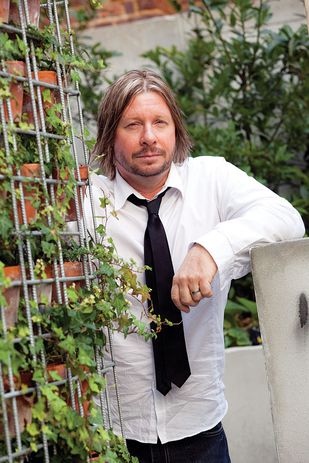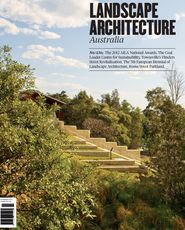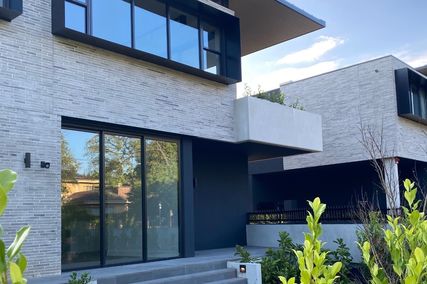
Greg Grabasch.
What qualities are important to you in the experience of spaces?
Personally, I sit up and take notice when spaces seem to ooze layers of experience. Be they social, cultural or just simply beautiful, the human grunge of a city laneway or a seemingly pristine Kimberley landscape, some spaces can drip with layers of experiences and storytelling. The real question is: How do you draw upon, retain and respectfully reveal these types of spatial qualities?
How does the way you work influence the outcomes?
My work is approached from a nervous and respectful angle, always with a good dose of curiosity. To treat space with respect I also try and consciously distance the project from my ego. While not always successful, it’s much easier when this part of me is under control and I have the opportunity to listen and learn about the space in question and include as much spatial experience from as many influences as possible. Seeing my direct hand in any project without harsh scrutiny scares me, just like hearing my voice being played back on a recording – eeek! In this way design trends tend to have a limited influence on our projects.
What are some of the current influences on your work?
The passion of our staff always keeps my influences fresh and keeps me wanting to push the boundaries. I still believe universities that instil a passion and respect for spatial design have completed their job successfully; from here a lifetime of learning awaits. My ongoing influences are undeniably the first Australians and, increasingly, past and present pillars of landscape architecture in Australia. People in Western Australia like Marion Blackwell, Lady Jean Brodie-Hall and the late George Seddon have paved the way for present-day practitioners. Ian McHarg, Dave Grohl and Basil Fawlty influence my life both through their personalities and the way they approach their work.
What is the future of landscape architecture?
The invention of personal flying machines (hover bikes) so that we can reclaim 80 percent of our public open space to be used as people-scaled spaces again; we need cultural and corridor habitats that reconnect “country.” Many main road corridors in Western Australia were built on Aboriginal pathways that linked waterholes, food sources etc. Anything that takes us in this direction and makes traffic consultants (bless their little cotton socks) redundant would be marvellous. More seriously, the future of the profession of landscape architecture truly must lie in the dreams, passions and empowerment of you and I; it lies with all landscape architects. This reality continues to hit me at times when I least expect it. There will be no resting for our profession as we will have to constantly put our stamp on and broaden our place in this world – no resting even when the professional world knows that we are a vital part of any multidisciplinary design team. I say multidisciplinary because heavens to Betsy if one discipline is allowed to rule over the provision of spatial design. A new world paradigm does not allow for any dictatorial approach to any one aspect in our lives – what a stuff-up that has always proven to be. The future of our profession requires us to be more bolshie and confident with our place in the practice of design while understanding the power of being custodians of this finite land. I also believe in bringing colourful phrases back into report writing.
What’s your definition of urban design?
“Urban design” – to have influence over how built form addresses the land (open space) and vice versa. “Urban designer” – a design professional or multidisciplinary design team that has an influence on how built form addresses the land or vice versa. Congratulations! This definition must make most landscape architects part of the “urban design” fraternity. These two words placed together, like “place making” and “landscape architecture,” have much added meaning placed upon them, whether it’s wanted or not. My questions in return would be: Which of these terms presently describe a core discipline and which terms still describe an area of design practice? Are present design professionals now prepared to slice off or give over these important chunks of design practice to commence further core disciplines? In addition, shouldn’t the design areas described by these terms stay multidisciplinary in process and practice? After all, isn’t urban design/placemaking a process and outcome of design professionals working together?
What do we need to understand about Australia to practise here?
As spatial practitioners we need to know that this land is finite, diverse and resilient, yet part of a delicate ecological balance. That we already have people to turn to who live with the understanding of this land’s diverse ecological systems and who have a custodian relationship with it continues to amaze. As part of the general population we need to know and respect that the first Australians are as diverse as the land itself. Learning always has its origin.
What keeps you going in your work?
Further understanding of people’s relationship to land. If we could only start our profession at the grand age of eighty years and include the life learnings and experiences from that time. An old boss from another time once said in passing, “How are the new graduates shaping up?” “Excellent!” I replied. “Yes, I am sure they are,” he mumbled, “however, remember they’ve had less time to make as many mistakes as you have.” “Thanks boss,” I replied, feeling very proud and chuffed knowing that this was his way of paying a compliment.















